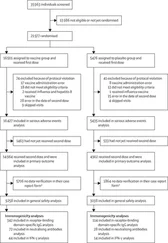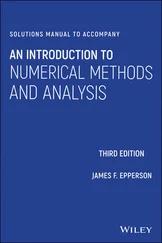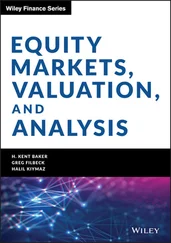1 Cover
2 Title Page Mediating Knowledge Set coordinated by Anne Lehmans and Vincent Liquète Volume 1
3 Copyright First published 2021 in Great Britain and the United States by ISTE Ltd and John Wiley & Sons, Inc. Apart from any fair dealing for the purposes of research or private study, or criticism or review, as permitted under the Copyright, Designs and Patents Act 1988, this publication may only be reproduced, stored or transmitted, in any form or by any means, with the prior permission in writing of the publishers, or in the case of reprographic reproduction in accordance with the terms and licenses issued by the CLA. Enquiries concerning reproduction outside these terms should be sent to the publishers at the undermentioned address: ISTE Ltd 27-37 St George’s Road London SW19 4EU UK www.iste.co.uk John Wiley & Sons, Inc. 111 River Street Hoboken, NJ 07030 USA www.wiley.com © ISTE Ltd 2021 The rights of Camille Capelle and Vincent Liquète to be identified as the authors of this work have been asserted by them in accordance with the Copyright, Designs and Patents Act 1988. Library of Congress Control Number: 2021946232 British Library Cataloguing-in-Publication Data A CIP record for this book is available from the British Library ISBN 978-1-78630-744-6
4 Foreword
The notion of risk The notion of risk The risk model brings to the fore the perception of an event that may occur, in “a future that may happen” (Beck 1986), which is not fully within our control. This event is sensed (and is not yet happening or real) as a danger that we must anticipate by picturing it and taking precautionary measures. This becomes a reverse causation of our action. Paradoxically, we tend to ask ourselves: how can we avoid the risks (even though it is the awareness of the risk which can ward off danger)? The perception of risk(s) then becomes a situation whereby the activity is associated with its uncertainties. Risk is distinct from danger, whose probability it relates to; it is distinct from the sole threat insofar as it is nourished by the perceptions that we have of it. Thus, for Ulrich Beck, at the heart of a civilization of risk, “risk has become the measure of our action” 1 . He describes the evolution of human and political action, linked to “scientific–technical–economic modernization”, as a response to the disorders resulting from its development (industry, environment, economy, etc.). Risk does not designate danger; it constitutes the answer in line with an analysis or a preventive action. It becomes a model for the development of human conduct, a reason for action. For Beck, risk is integrated into a positive culture. With reference to “emancipatory catastrophe”, he calls for new regulations of the human mind by making it the principle of an anticipatory consciousness and of an action that supposes taking risks. “Risk”, for Beck, is not only the danger but also its perception and a critical modality that calls for a positive culture of change and a reflexive steering of action. Digital risks, associated with the socio-technical modernity described by Beck, are new challenges that require the construction of “new regulations for action”: for Beck, this is a “disruptive innovation”. Major cultural transformations are taking place, such as that of digital activity, along with its uncertainties and possibilities.
Digital risks and the context of education Risk perception Educational response and research
5 Introduction
6 PART 1 Risk Perceptions, Education and Learning 1 Digital Risks: An Obstacle or a Lever for Education?1.1. Introduction 1.2. Digital risks and education: what are we talking about? 1.3. Questioning perceptions of digital risks among new teachers 1.4. Teachers’ perceptions of digital risks 1.5. Reflection on the role of digital risk representations in education 1.6. Conclusion 1.7. References 2 Teenagers Faced with “Fake News”: Perceptions and the Evaluation of an Epistemic Risk2.1. Introduction 2.2. Fake news: from production to reception 2.3. Methodological framework of the study 2.4. Results of the study 2.5. Discussion of the results and reflections on media and information literacy 2.6. Conclusion 2.7. References 3 “A Big Nebula that is a Bit Scary” (Louise, Trainee Schoolteacher): Training through/in Digital Technology, in School and in Professional Training 3.1. Social beings, above all else 3.2. Understanding of digital technology in the classroom 3.3. Teaching with and through digital technology: Constant risks 3.4. Potential courses of action 3.5. References
7 PART 2 Risks in the Light of Socio-Economic Issues 4 Top Managers Confronted with Information Risks: An Exploratory Study within the Telecommunications Sector4.1. Introduction 4.2. Information risk: the conceptual field 4.3. Controlling information risks: Security policy 4.4. Information risk and management 4.5. Study methodology and the stakeholder group 4.6. Information risk: The perspective of top telecoms managers 4.7. Conclusion 4.8 Acknowledgments 4.9. References 5 Cell Phones and Scamming Risks in Cameroon: Users’ Experiences and Socio-Institutional Responses5.1. Introduction 5.2. Mechanisms behind cell phone scamming in Cameroon: exhibiting credulity 5.3. The dynamics of cell phone use in Cameroon 5.4. Socio-institutional governance of cell phone use in Cameroon: Optimal or approximate mediations? 5.5. Conclusion 5.6. References
8 PART 3 Digital Risks: Practices and Mediation 6 Towards a Normative Prescription of Information Practices on Digital Social Networks: A Study of Documentary Pedagogical Projects in Middle School6.1. Introduction 6.2. Contextualization of risk 6.3. Issues to consider 6.4. Research objects 6.5. Research protocol 6.6. Risk regarding DSNs in the pedagogical approach 6.7. Discovering DSNs in a school context: Dealing with risks 6.8. Perspectives for an information culture 6.9. Conclusion 6.10. References 7 MIL as a Tool for Teachers to Prevent Risk and Transmit Digital Culture7.1. Studying digital technology in schools from the perspective of teachers’ representations 7.2. What do digital and media literacy evoke in teachers? 7.3. The contours of media and information literacy according to teachers 7.4. What does the requirement to transmit digital culture mean for teachers? 7.5. Conclusion 7.6. References
9 Conclusion
10 Postface
11 List of Authors
12 Index
13 End User License Agreement
1 Chapter 1 Figure 1.1. Distribution of respondents addressing digital risks by institution Figure 1.2. Distribution of respondents addressing digital risks by disciplinary... Figure 1.3. Teachers’ perceived risks to themselves and students
2 Chapter 3Figure 3.1. Age of the respondents. For a color version of this figure, see www....
3 Chapter 4Figure 4.1. Key elements of security within Orange (adapted from Orange (2017)) Figure 4.2. Shared responsibility in the approach to security (adapted from Oran...
4 Chapter 5Figure 5.1. Screenshot of a French money-making scam message. The message claims...Figure 5.2. Screenshot of a fraudulent money transaction message in French
5 Chapter 6Figure 6.1. Modeling information practices on DSNs Figure 6.2. Star graph of dangers6. For a color version of this figure, see www....Figure 6.3. Star graph of risks and risk factors7. For a color version of this f...Figure 6.4. Star graph of attention8. For a color version of this figure, see ww...Figure 6.5. Star graph of freedom and constraints9. For a color version of this ...
6 Chapter 7Figure 7.1. Methodology of research on the representations of digital technology...Figure 7.2. Frequency of digital technology use in the classroom Figure 7.3. MIL in elementary school, department 64 Figure 7.4. What media and information literacy means to elementary-level teache...Figure 7.5. Key words to define media literacy grouped by descriptors and micro ...Figure 7.6. Teachers’ feelings about digital technology Figure 7.7. Ranking terms with the most occurrences when the topic of digital te...Figure 7.8. Representation of media and information literacy among elementary sc...Figure 7.9. What teachers think digital literacy contains
Читать дальше












